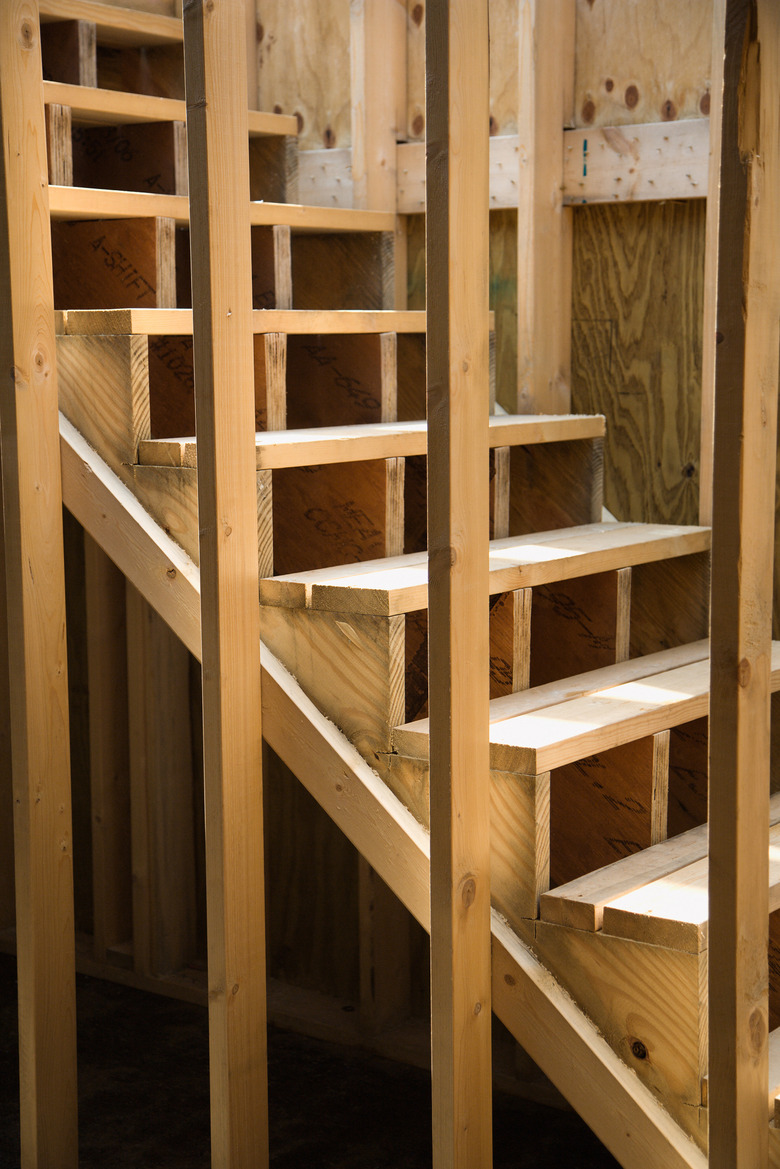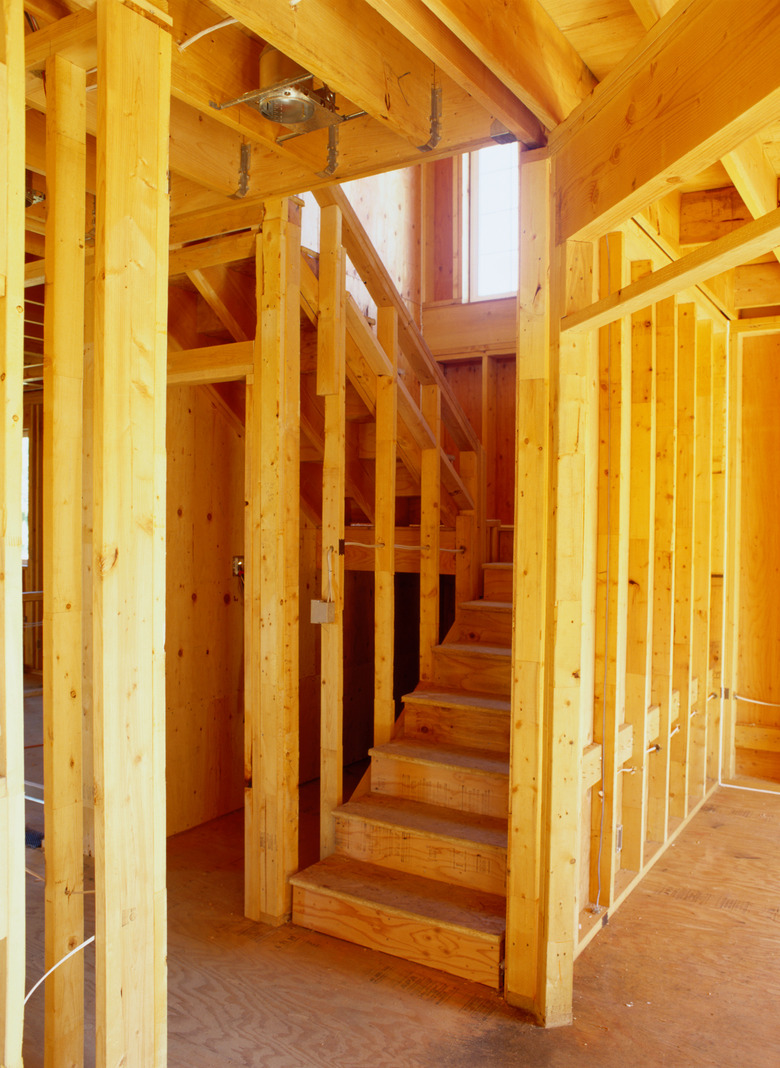How To Make A Wood Bullnose Edge For A Step
Things Needed
-
Measuring tape
-
Wood or existing wooden step tread
-
Router with a bullnose bit or half-round bit
-
Safety goggles
-
Sandpaper
On stairs, the overhanging edge at the front of each tread is called a nose, or nosing. When the nose edge has a rounded profile, it is commonly referred to as a bullnose edge. This tread enhances aesthetic of steps and facilitates climbing them without tripping. Stair treads can be bought with pre-shaped edges, but the bullnose edge can also be made at home on new or existing steps.
Step 1
Determine the finished size and depth of your step treads from front to back of each step. The finished depth of the step treads is measured horizontally from the tip of the bullnose edge to the tip of the bullnose edge of the step above. This depth typically should be a minimum of 10 inches, with the tip of the each bullnose extending between 3/4 inch and 1-1/4 inches from the face of the riser directly below it.
Step 2
Double-check the size of your wood or existing wooden step tread and adjust the measurements if necessary. It is good to leave around 1/8 inch extra tread depth for wiggle room at the edge to be shaped into the bullnose.
Step 3
Select a bullnose or half-round router bit with a radius equal to or less than half the thickness of the wooden tread.
Step 4
Put on safety goggles before using a router with the selected rounding bit. Use the router along the front edge of the tread to carve it into the desired bullnose shape.
Step 5
Smooth the finished bullnose edge with sandpaper and continue building, finishing or reassembling the stair.
Tip
If adding an edge to existing step treads, it may be easier to sand any paint or finish off the tread before reshaping the nose.
Warning
Be careful when using routers and other power tools, as their misuse can be dangerous. Check local building codes before modifying or building a new stair, as finished step dimensions are often strictly regulated.

